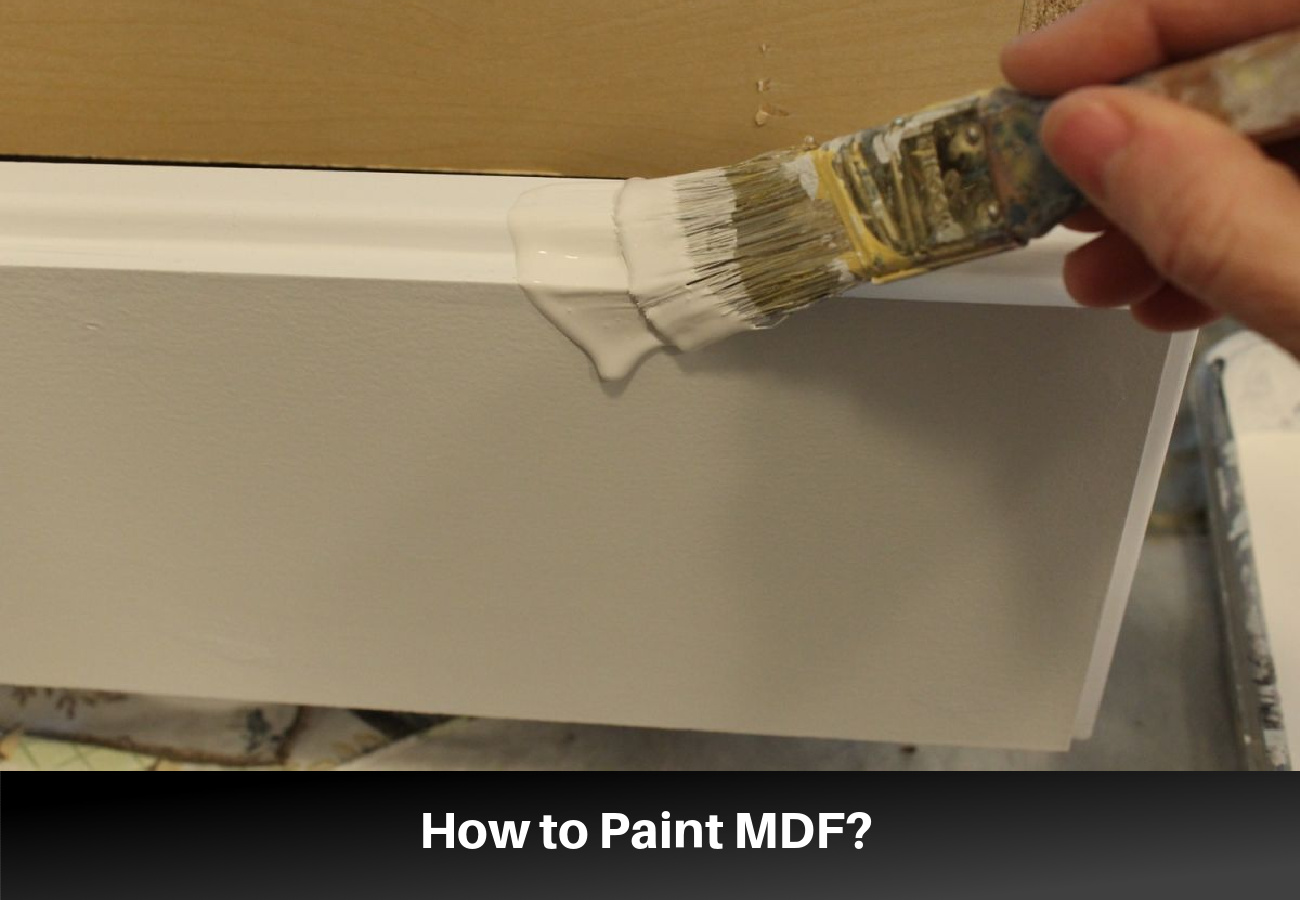Learning how to paint MDF opens up a world of creative possibilities, allowing you to transform this humble building material into projects of elegance and style. MDF, with its smooth surface, is the ideal candidate for paint. Whether you want to add a bold pop of color to a piece of furniture or customize a cabinet to suit your new style, mastering the art of painting MDF will provide you versatility and help you save on cost. With some paint, the right preparation, good technique, and just a bit of creativity, you can elevate the look of any MDF project.
Benefits of Learning How to Paint MDF
Learning how to paint MDF offers several benefits for your bottom line and for improving the aesthetics of your projects.
- Great Visual Appeal – MDF has a smooth surface that is an ideal canvas for paint. Painting MDF will give it a more professional look and allow you to enhance its appearance with color.
- Customization and Personalization – Learning how to paint MDF will allow you to create a project according to your personal style. Whether you are painting cabinets, furniture, wall panels, or shelves, you can choose the color, pattern, and sheen level to display on the surface.
- Protection and Durability – Applying paint to the surface of MDF will help provide a protective barrier against moisture, scratches, and stains. This will increase the longevity of the appearance and structure of your project.
- Seamless Integration – Painting MDF allows you to integrate new projects with old structures in your home. By painting the new project the same color as the old elements, they are integrated into one design.
- Cost-Effectiveness – MDF is a cost-effective material. You can elevate the look of MDF and make it indistinguishable from solid wood by painting it.
- Easy Maintenance – Painting MDF gives it a glass-like surface that makes it easy to wipe down and clean.
Steps for Painting MDF
To achieve the most professional result, it is vital to follow guidelines that present a systematic approach to the project.
- Gather Your Materials
- Brush or foam rollers
- 220 fine-grit sandpaper
- Damp cloth or tack cloth
- Wood filler or putty
- Putty knife
- Primer for MDF
- Paint tray and liner
- Paint for MDF
- Sealant such as polyurethane, varnish, or wax (optional)
- Surface Preparation
- Begin by ensuring that your MDF surface is clean and clear from debris and other contaminants. Use a damp cloth or a tack cloth to wipe down the surface right before you begin painting.
- Make sure the edges and the surface of the MDF are smooth. If there are rough surfaces or imperfections, lightly sand them with fine-grit sandpaper. Clean off any accumulated grit from the sanding.
- Fill any holes or imperfections in the MDF with wood filler or putty. After the putty is dry, sand the surface with fine-grit sandpaper and clean off the dust from sanding.
- Priming
- Priming MDF helps to prepare the smooth surface of MDF to receive paint more easily. It also helps prevent MDF from absorbing too much paint.
- Apply a high-quality primer that has been specifically formulated for MDF. Some experts recommend using solvent-based primers as water-based primers cause the wood fiber grains to swell.
- Using a brush or a roller, apply a thin layer of primer over the entire surface. Allow this coat to dry completely. Follow the manufacturer’s instructions regarding drying times.
- Sanding
- Once the primer is dry, lightly sand the primed MDF surface with a fine-grit sandpaper. This helps to smooth the surface and remove any brush marks or the rough surface of the raised wood fiber grains.
- After sanding, wipe away any residue and dust with a damp cloth or a tack cloth.
- Painting
- Choose a type of paint that works best for your project. You can choose either type of paint, water-based or oil-based. Oil-based paints provide a smoother finish, but water-based paints are much easier to apply and have a lower VOC output.
- Begin painting by applying a thin coat using either a brush or a foam roller. Either method will work, but brushes tend to leave residual marks.
- Allow each coat to dry completely before applying a new coat. Multiple thin coats are better for creating a seamless surface than one thick coat.
- If you desire, you can lightly sand between coats. Be sure to clean the surface each time after you sand and before you apply another coat of paint.
- Repeat this process until you achieve the desired coverage and color you want.
- Finishing
- Once the final coat of paint is completely dry, you can decide if you want to add a topcoat like polyurethane, varnish, or wax to the surface.
- This topcoat adds an extra layer of protection to the painted surface.
- Follow the manufacturer’s guidelines to apply the topcoat.
- Allow the topcoat to dry completely before use.
Customizable Paint Options for MDF
Paint is one of the best ways to customize MDF projects to fit your home and your unique personality. There are many ways for creating a customized finish with paint.
- Stenciling and Patterns – Use stencils to achieve intricate patterns on your MDF projects. Stencils allow you to create visually pleasing repeating patterns, similar to wallpaper on wall surfaces and pleasing details on furniture.
- Faux Finishes – Painting MDF using faux finishes gives you the option to give your project the look of wood grain, stone, or even brick.
- Color Blocking – Color blocking is painting large sections of an area in different colors using bold geometric shapes. Color blocking is a way to create an exciting design on MDF cabinets, shelves, or wall panels.
- Ombre and Gradient Effects – Blend multiple shades of the same color or different colors to create an ombre or gradient effect on your MDF project.
- Decoupage and Mixed Media – You can use paint to blend it with other artistic touches like decoupage or mixed media to create a design with layered texture and depth.
- Whiteboard and Chalkboard Surfaces – You can transform your MDF surface into a usable whiteboard or chalkboard using specialized paint varieties.
- Metallic Finishes – Give your MDF project just a bit of glam with metallic paint highlights. Apply this paint to just the edges of a piece or highlight a particular section for a more subtle shine.
- Custom Artwork and Murals – The smooth surface of MDF is ideal for your own creations such as murals and artistic designs.
Can I Paint Any MDF Surface?
You can paint most MDF surfaces, but there are a few exceptions that make paint a less viable option for certain MDF surfaces.
- Raw or Unfinished MDF – Raw MDF has a highly porous surface that is not suitable for paint. You must apply a special primer to prepare and seal the surface.
- Laminated MDF – Laminated MDF has a slick surface that can resist paint adhesion. You can prepare a laminated MDF surface for painting with light sandpaper and special primer.
- Water-Damaged MDF – MDF is not a waterproof material and will sustain significant damage with exposure to high humidity or liquid. Before you paint the surface of water-damaged MDf, you must allow it to dry completely. Fix the appearance of the MDF with wood filler or putty before priming and painting it.
- High-Traffic Surfaces – Paint provides a durable coat for MDF, but it may not be suitable for high-traffic areas that receive heavy wear. Consider using additional protective measures such as a heavy-duty sealer if your MDF surface is exposed to heavy traffic.




